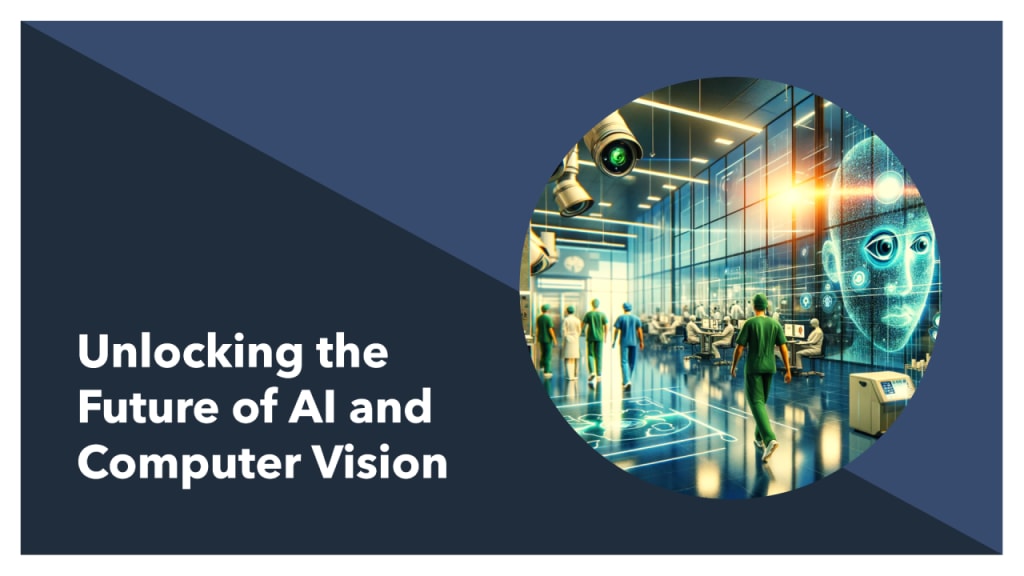Unlocking the Future with computer vision
Computer Vision Services

In the dynamic landscape of technology, few innovations have showcased as much promise and potential as computer vision. This fascinating field, which enables machines to interpret and make decisions based on visual data, is not just an emerging trend but a transformative force across various industries. From healthcare to retail, automotive to agriculture, computer vision are reshaping how businesses operate and interact with their environments. In this blog, we delve into what computer vision are, explore their applications, and highlight the profound impact they are having on our world.
What Is Computer Vision?
At its core, computer vision is a subset of artificial intelligence (AI) that trains computers to interpret and understand the visual world. Using digital images from cameras, videos, and deep learning models, machines can identify and classify objects, make decisions, and even perform actions autonomously. Computer vision encompasses a wide range of applications and tools that leverage this technology to provide solutions across various sectors.
Key Components of Computer Vision
Image Processing: This involves techniques to enhance raw images to make them suitable for further analysis. It includes noise reduction, contrast enhancement, and edge detection.
Object Detection and Recognition: This is the process of identifying and labeling objects within an image. Techniques like convolutional neural networks (CNNs) have revolutionized this aspect, making it possible to accurately detect objects in real-time.
Image Segmentation: This involves partitioning an image into multiple segments to simplify its analysis. Each segment corresponds to a different object or region within the image.
3D Vision: This allows for the reconstruction of a 3D model from multiple 2D images, providing depth information crucial for applications like autonomous driving and augmented reality.
Applications of Computer Vision
1. Healthcare
One of the most impactful applications of computer vision is in healthcare. Medical imaging technologies like MRI, CT scans, and X-rays generate vast amounts of data that require detailed analysis. computer vision can assist radiologists by automatically detecting abnormalities such as tumors, fractures, or infections. This not only speeds up diagnosis but also increases accuracy, leading to better patient outcomes.
2. Retail
In the retail sector, computer vision is revolutionizing how businesses manage inventory, enhance customer experience, and streamline operations. For instance, automated checkouts using facial recognition and item scanning technologies reduce the need for cashiers, making shopping more efficient. Additionally, computer vision can analyze customer behavior, helping retailers optimize store layouts and product placements to boost sales.
3. Automotive
The automotive industry has embraced computer vision to develop advanced driver-assistance systems (ADAS) and autonomous vehicles. These systems rely on computer vision to interpret the driving environment, detect obstacles, read traffic signs, and make real-time decisions. This technology is paving the way for safer, more efficient transportation systems.
4. Agriculture
In agriculture, computer vision are enhancing crop management and livestock monitoring. Drones equipped with cameras and computer vision algorithms can survey large fields, detecting issues such as pest infestations, nutrient deficiencies, or irrigation problems. This allows farmers to address problems promptly and optimize their yields.
5. Manufacturing
Computer vision is critical in modern manufacturing processes. It is used for quality control, where machines inspect products for defects at a speed and accuracy unattainable by human workers. This ensures that only products meeting the highest standards reach the market, reducing waste and increasing customer satisfaction.
6. Security and Surveillance
Security systems have been significantly improved with the integration of computer vision. Advanced surveillance cameras can detect unusual activities, recognize faces, and even predict potential security threats. These systems provide real-time alerts, enabling swift action to prevent incidents.
Benefits of Implementing computer vision
1. Increased Efficiency
By automating repetitive and time-consuming tasks, computer vision significantly boosts operational efficiency. This allows human workers to focus on more complex and creative aspects of their jobs.
2. Cost Savings
Automation reduces the need for manual labor and minimizes errors, leading to substantial cost savings. In manufacturing, for instance, automated quality checks can prevent costly recalls and waste.
3. Improved Accuracy
Human error is a significant risk factor in many industries. Computer vision systems, once properly trained, can perform tasks with a level of accuracy and consistency that far surpasses human capabilities.
4. Enhanced Decision Making
With the ability to analyze vast amounts of visual data quickly, businesses can make informed decisions based on real-time insights. This is particularly valuable in dynamic environments like retail and healthcare.
5. Scalability
Computer vision solutions can easily scale to handle growing amounts of data or expanded operations. This flexibility is crucial for businesses looking to grow without compromising on performance or quality.
Challenges and Future Prospects
Despite its numerous benefits, the implementation of computer vision is not without challenges. These include:
Data Privacy and Security: Handling sensitive visual data, especially in sectors like healthcare and retail, requires stringent data protection measures to prevent breaches and misuse.
Technical Complexity: Developing and deploying computer vision systems requires specialized knowledge and expertise. There is a growing demand for skilled professionals in this field.
High Initial Costs: The upfront investment in hardware, software, and training can be significant. However, the long-term benefits often justify these costs.
Looking ahead, the future of computer vision is bright. Advancements in AI, particularly in deep learning, are continually improving the accuracy and capabilities of these systems. We can expect to see even more innovative applications, from smart cities with integrated surveillance and traffic management systems to personalized education platforms that adapt to individual learning styles through visual analysis.
Conclusion
Computer vision are undeniably a cornerstone of the technological revolution. By enabling machines to see, understand, and act upon visual data, this technology is transforming industries and improving lives. As we continue to explore and harness its potential, the future promises a world where the synergy between human intelligence and machine vision creates unprecedented opportunities and solutions. Whether in healthcare, retail, automotive, agriculture, or beyond, the impact of computer vision is profound and far-reaching, heralding a new era of innovation and efficiency.
About the Creator
Enjoyed the story? Support the Creator.
Subscribe for free to receive all their stories in your feed. You could also pledge your support or give them a one-off tip, letting them know you appreciate their work.





Comments (1)
helpfull article and very well written .I hope you find my stories interesting.